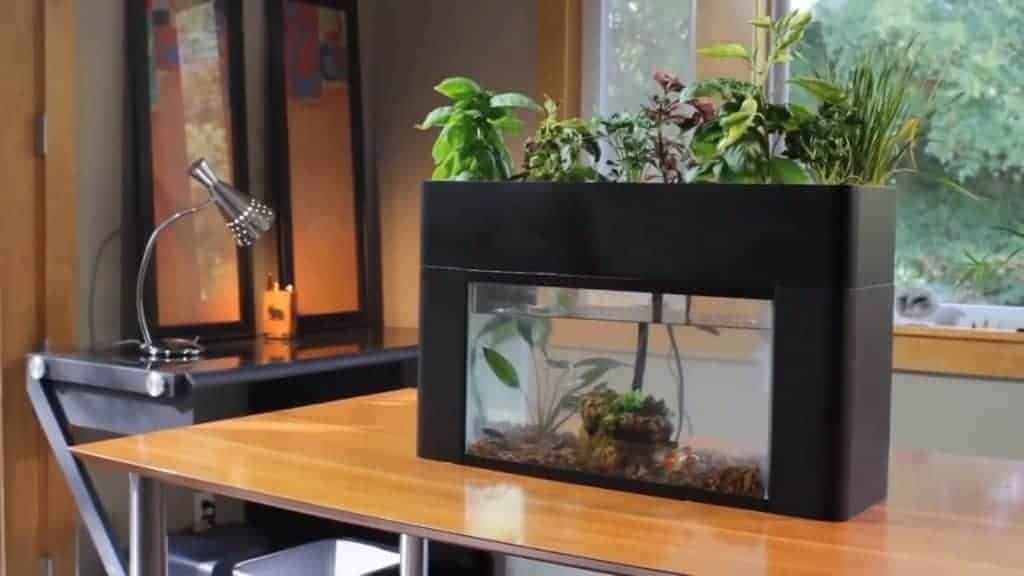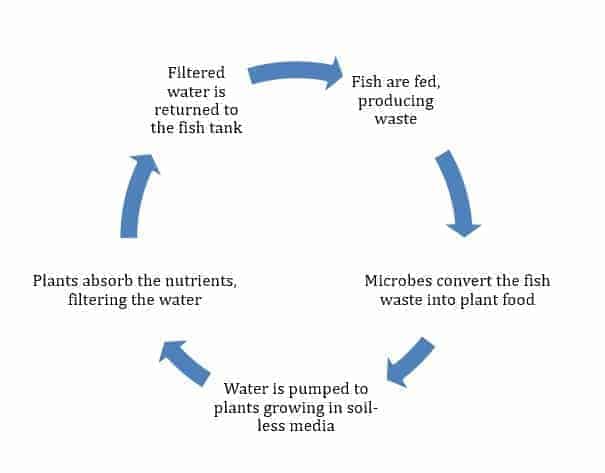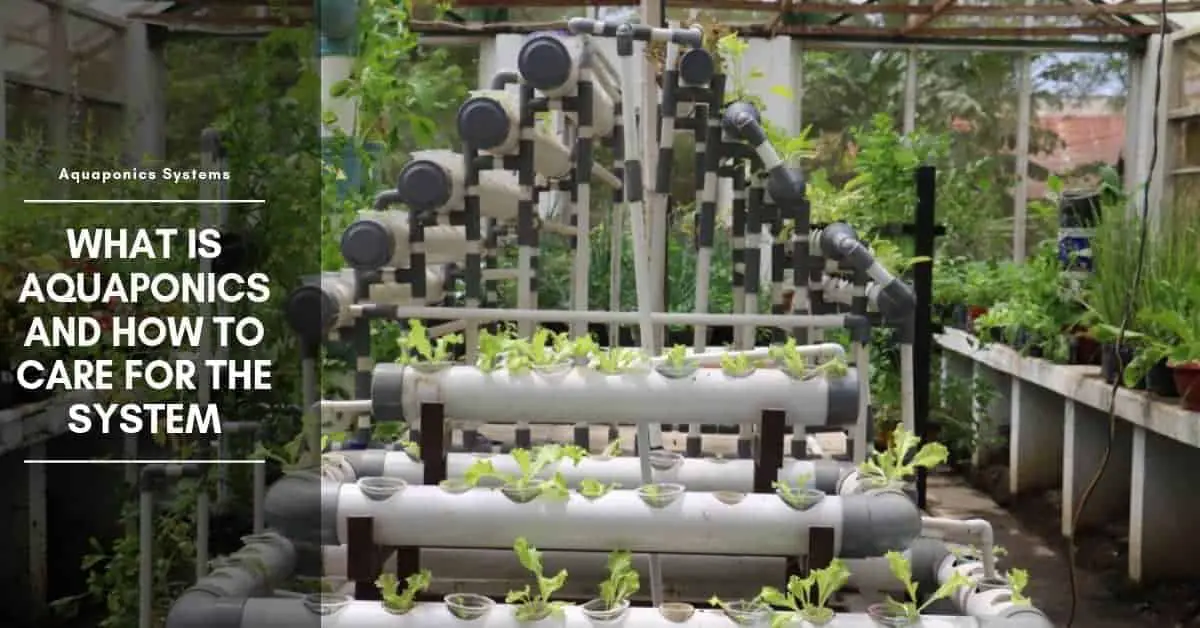At its most basic, aquaponics is nothing more than a plant grown in symbiosis (a mutually-beneficial relationship) with fish or other aquatic creatures. If you have weeds or plants in your aquarium, you are practicing aquaponics.
An aquaponics system is closed-system permaculture with three components:
- Fish
- Plants
- Bacteria
These three components live side-by-side and work together to create an environment that is mutually advantageous. This means that the correct balance of each is required for the system to be healthy and functional. Achieving this balance, the pursuit of which is a little addictive is the main goal of the aquaponic grower.
The needs of a plant in an aquaponics system
The needs of a plant are simple: air, water, and nutrients. When provided with these essentials, plants then use the process of photosynthesis to convert ambient light into glucose, which is the building block of all vegetable matter.

Plants require a range of nutrients in different amounts in order to photosynthesize successfully. The beauty of aquaponics is that fish can provide plants with these nutrients. It is no wonder that plants love fish!
In a standard garden, animal manures might be used to provide plants with the nutrients that they need to grow. However, these manures must be composted or processed in order to make the nutrients they contain accessible.
API STRESS ZYME Freshwater and Saltwater Aquarium Cleaning Solution 16-Ounce Bottle
API ACCU-CLEAR Freshwater Aquarium Water Clarifier 4-Ounce Bottle
12% OffAPI GENERAL CURE Freshwater and Saltwater Fish Powder Medication 10-Count Box
15% OffIn the same way, an aquaponic system functions when bacteria process fish waste, converting it into nitrates. This provides the plants with the nutrients they need to grow in a highly accessible form.
The Aquaponics cycle
The aquaponics cycle begins when fish are fed, and create waste. This waste is largely ammonia, which can be fatal to fish at high levels. Therefore, nitrifying bacteria break it down into plant food. In absorbing this food, plants filter the water, which is then returned to the fish tank.

Hydroponic and aquaponic gardening: How does aquaponics differ?
Some people might think hydroponic and aquaponic gardening is very similar, and in some regards there are similarities, but there are certainly significant differences between the two methods of gardening. Whereas the hydroponic garden is a garden without soil, the aquaponic garden focuses mainly on a symbiosis of nutrients between plants and fishes. Also, both systems are very different from regular gardening as well. In a regular garden, the needs of plants are generally provided for in a more natural way:
- Sun provides light
- Rain provides water and may be supplemented with irrigation
- Soil provides a growing media and the nutrients that plants require
Growers may also improve the soil and provide plants with additional nutrients using fertilizers and composts.
Hydroponic garden
In a hydroponic garden, on the other hand, the growing environment is more controlled:
- Plants are grown in an inert media
- Water is constantly cycled past plant roots, providing hydration
- Nutrients are provided in the cycling water and come from custom-made, chemical mixes
Advantages of hydroponics
The advantages of hydroponics over regular gardens include the improved hydration, as well as the higher level of control that growers have over the nutrients available to plants. Nutrient solutions are customized to suit plant species and their stage in the growth cycle, leading to more consistent yields and improved production overall.
In comparison with natural gardening, aquaponic systems are similar to hydroponics with one key difference – nutrients in the cycle come from fish, which produce waste that is then converted into available plant food by bacteria.
Why choose aquaponics and what are the benefits?
While aquaponics is not as exact as hydroponics when providing for specific crop needs, it is more economical: Aquaponics does not require expensive chemical inputs, has less waste-water and provides the grower with two crops (fish and plants) from the same space and inputs.
Aquaponic systems are also highly adaptable, making them a suitable garden choice for a variety of different climates, locations, spaces, and needs. The systems are surprisingly simple to set up. They can be small or large, located indoors or outside, and can successfully support any number of aquatic creatures and plant species.
Health and food security
Aquaponics also appeals to those concerned with health and food security. The fish and vegetables produced in the system are more reliable than those produced commercially, as aquaponics is naturally organic and the grower knows exactly what their produce has come into contact with. Additionally, oily fish such as carp and trout raised in an aquaponic system on a controlled died have higher levels of omega-3 fatty acids, which have been linked to cancer prevention and other health benefits, than fish from commercial sources.

Hi, my name is Sean, and I’m the primary writer on the site. I’m blogging mostly about freshwater and saltwater aquariums, fish, invertebrates, and plants. I’m experienced in the fishkeeping hobby for many years. Over the years I have kept many tanks, and have recently begun getting more serious in wanting to become a professional aquarist. All my knowledge comes from experience and reading forums and a lot of informative sites. In pursuit of becoming a professional, I also want to inspire as many people as I can to pick up this hobby and keep the public interest growing.
Read more about Sean.
Please join also my Facebook group.















